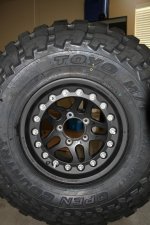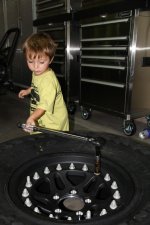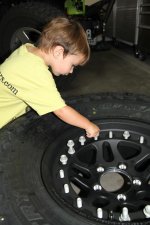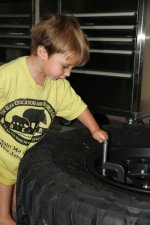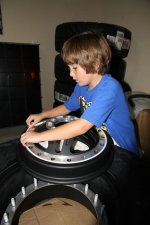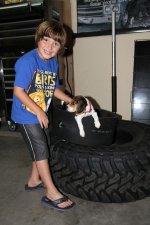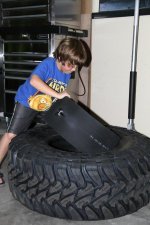subscribed and thanks for all the research!!!
No prob, guys! It's hard to do independent research like this for the good of the Jeep community in general without stepping on toes, so I'm trying to be as cautious as possible

On a separate note... I'm doing some recalculations. After re-researching the floating vs fixed caliper issue, I'm having to adjust my calculations. As discussed on numerous other threads and forums, and brake discussion sites in general, there is an adjustment to calculating
effective caliper piston surface area for a floating piston caliper: the equivalent surface area must be multiplied by 2 to be compared with a fixed 4-piston caliper, for example. This has created a bit of a bump in the road for me. I'm trying to determine whether a fixed 4-piston caliper will perform better than a floating 2 piston caliper (with actually larger pistons than the fixed caliper). There are advantages to the fixed caliper like the one I've been pursuing: larger, more rigid housing, more area for heat dissipation, more even pad clamping force distribution. BUT... will my caliper with 44mm pistons x 4 perform better than say the Jeep J8 brakes I discussed way back on page 1 and 2 of this thread, with only 2 x 54mm pistons in a
floating caliper body?? (assuming same rotor to keep things simple) THAT is the key question. The problem is that to test these against each other, I'd have to buy 8 calipers (set of 4 fixed and set of 4 sliding) and machine 8 adapter brackets. Kinda cost prohibitive for my little research project
 Here's another interesting point, though:
Here's another interesting point, though: The fixed calipers I have been pursuing, because they have the smaller 44mm pistons, will actually match BETTER with our stock master cylinders than the larger 54mm x 2 calipers used on the Jeep J8. The pedal feel with the smaller pistons in the fixed caliper will be much firmer. In fact, the original vehicle that these calipers were used on had the same bore size master cylinder as our JKs do. That's encouraging.
But the key is whether or not the performance increase will be "Oh, that's a bit better..." or "DAMN! Now that's a brake system!!" My goal with all of this research is the second response :yup:
So...
Maybe my next phase should be a little numerical data: find a strain gauge...some kind of numerical indicator of clamping force... that I can put inside each caliper, and measure the clamping force generated by each. Do 3 trials: Stock, 2-piston floating (like something along the lines of a Dodge Ram 1500 caliper), and 4-piston fixed (that has a smaller piston size than the floating variety). Then see which has the most squeeze for a given brake pedal force.
Because there are 3 key ingredients to maximizing braking:
1. Rotor size - bigger = more braking torque. Pure and simple.
2. Clamping force
3. Pad coefficient of friction (often overlooked!! good race-quality pads can 'grab' the rotor up to 50% better than cheaper OEM pads)
Well, we already know I'm trying to maximize #1 with a 14" rotor. I'm of course going to get the best pad I can reasonably find for helping with #3. So all this caliper and master cylinder research comes down to helping #2. (
Who...does...number....2....work...for!!???? :cheesy: Sorry. Couldn't resist.
So if anyone has any suggestions of some type of pressure gauge I could fit in between the pads of a caliper (in place of a rotor) than can measure a few thousand psi, please let me know. I've used them in engineering school. Just need to find a cheap equivalent in the real world.


